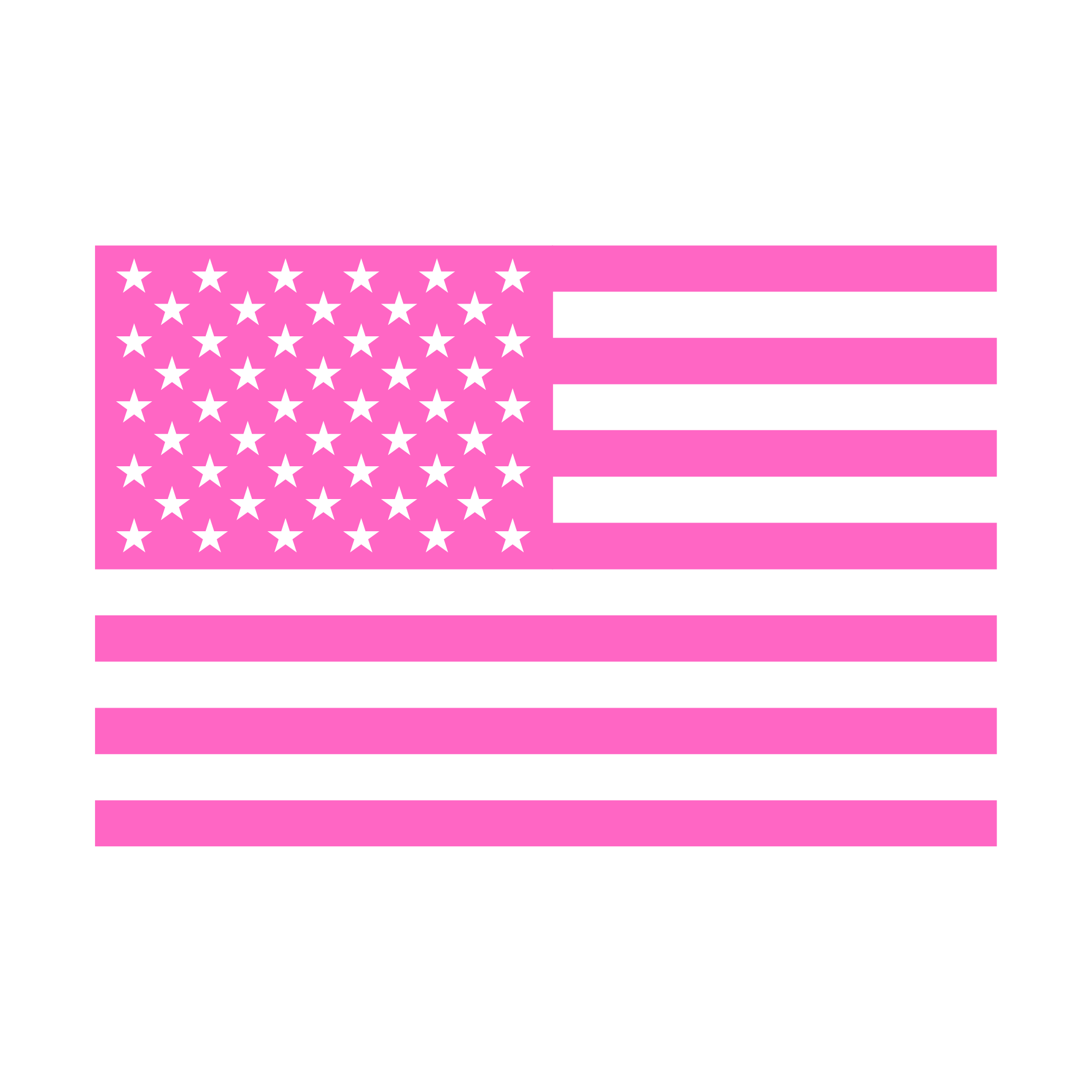Can I take my Emergency Escape Car Hammer on an airplane?
The short answer is yes. You can check your emergency escape car hammer in your bag, but you CANNOT put it inside your carry-on luggage. You have to put it inside your checked in luggage.
Read on to know more about safety tools and traveling tips.

Traveling by plane means you have to think about what you're packing. Maybe you're someone who likes to be prepared for everything, including emergencies. You might wonder if it's possible to bring an emergency escape hammer on a plane.
This tool is meant to help break window glass in a dire situation, but can it fly with secretary checkpoint rules?
One key fact is that the final say on what goes through the security checkpoint lies with TSA officers. They decide if your item can make it onto the flight or not—even those safety tools like window glass breaker devices designed for emergencies are subject to their approval.
Our article is here to guide you through understanding these rules and finding out how you can travel with your emergency equipment safely and legally. Keep reading... It gets interesting!
Table of Contents
- General Rules for Carrying Tools
- Specific Policy on Emergency Escape Hammers
- Legal Considerations When Bringing Hammers on Planes
- Prohibition of Hammers in Carry-On Luggage
- Regulations for Checked Luggage
- Safety Concerns with Emergency Escape Hammers on Planes
- Potential Risks in Cabin
- Handling by Airport Security
- Alternatives to Carrying Escape Hammers on Planes
- Packing Tips for Checked Luggage
- Documentation and Clearing with Airlines
- Frequently Asked Questions
- Can I bring any type of hammer in checked luggage?
- What are the penalties for carrying prohibited items?
- How do I declare tools in my luggage?
- Tips for Safe and Compliant Travel
- 1. Can I bring a window glass breaker tool, like an emergency escape hammer, on a plane?
- 2. Is it okay to carry marijuana or cannabis-infused products on a flight?
- 3. What about Cannabidiol (CBD)? Can I take CBD with me when flying?
- 4. Are there restrictions on bringing items like button cells or valves used for recharging devices?
Key Takeaways
- TSA does not allow emergency escape hammers in carry-on bags because they could be used as weapons. You must pack them in checked luggage.
- When packing an emergency hammer for flight, wrap it well to prevent injury or damage. Check the TSA and airline rules before flying to avoid problems at security.
- Some safety tools are allowed on planes. Look up TSA-approved items like personal alarms or portable door locks. These keep you safe without breaking travel rules.
- If your tool is banned from flights, think about renting or buying one when you get there. This way, you follow the law and still have what you need.
- Always check with the airline or TSA if unsure about what you can bring. This helps make your trip smooth and keeps everyone safe on the plane.
Understanding Emergency Escape Hammers

Blingsting's Escape Hammer/Car Window Breaker with Seatbelt Cutter
Emergency escape hammers break windows fast in a pinch. They have a sharp point and sometimes a blade to cut seat belts too.
Definition and Purpose
An emergency escape hammer is a tool made to help people get out of their cars quickly if they're stuck. It usually has a pointed tip that can break window glass. There's also often a blade part to cut through seat belts.
This type of hammer is small and easy to carry, making it ideal for emergencies on the road.
Safety tools like the emergency escape hammer are essential for quick escapes during travel mishaps.
The main goal is keeping travelers safe by giving them a way to free themselves from trapped situations in vehicles, especially when doors won't open or windows won't break easily with just hands or feet.
These hammers are not just useful; they could save lives by allowing fast exits.
Common Features
Emergency escape hammers are designed to get you out of a car quickly if needed. They often have a pointed metal tip to break window glass and sometimes include a blade to cut seat belts.
These tools are small, easy to use, and can be attached to your keychain for quick access. Some models might even have features like battery charging or lights for use in the dark.
Now, think about taking such a tool on a plane. The TSA keeps an eye on what travelers bring because they want everyone safe. Let's dive into how these rules apply to emergency escape hammers and similar safety gear next.
TSA Regulations on Tools and Safety Equipment
When it comes to flying, the TSA sets clear rules about what tools and safety gear you can bring. They draw a line between what's okay for your carry-on and what must go in checked luggage.
General Rules for Carrying Tools
The TSA has rules for what tools you can bring on a plane. Small tools, like screwdrivers and pliers less than 7 inches long, can go in your carry-on bag. But bigger items must be checked in.
This means if your window glass breaker tool is small and doesn't look dangerous, it might fit in the cabin with you. Always check the latest updates from the TSA before you pack. They keep changing rules to make sure everyone stays safe.
Your safety comes first; always follow TSA guidelines for a smooth journey.
Emergency hammers are tricky because they have sharp points meant to break glass. The TSA prefers that travelers put these and similar tools in their checked luggage to avoid any risk during the flight.
Remember, just because a tool fits into a carry-on doesn’t mean it’s allowed there. Each item gets looked at by an officer who decides if it's safe for travel.
Specific Policy on Emergency Escape Hammers
TSA has rules about what you can bring on a plane. Emergency escape hammers, tools to break window glass, are seen as unsafe. They say these hammers could be used in bad ways. So, they do not allow them in your carry-on bags.
But you can put them safely in your checked baggage. Make sure it's wrapped well and won't hurt anyone handling your bag.
Before flying, check TSA updates online or call the airline to avoid problems at the airport security x-ray machines. Airlines and TSA workers look closely at items that might cause trouble on a plane like battery-powered devices or safety tools with sharp edges.
Packing your emergency hammer right keeps everyone safe – from passengers to flight attendants and baggage handlers.
Legal Considerations When Bringing Hammers on Planes
Thinking about flying with your safety hammer? Remember, hammers can't come in your hand luggage. You have to check them in, and even then, there are rules. Drill down into those regulations if you're packing a tool for breaking windows on a plane.
Prohibition of Hammers in Carry-On Luggage
Hammers, including those designed to break glass in emergencies, can't go in your carry-on. These tools are seen as dangerous. They could be used to harm others or disrupt the flight.
So, they must travel in checked luggage if you need them.
You might think a small hammer for safety won't cause trouble. Yet all hammers face the same rule. This keeps everyone safe in the air and on the ground.
Safety first means hammers check-in, not carry-on.
Regulations for Checked Luggage
You can put emergency escape hammers in your checked bags. The TSA says this is okay. Still, they might want to look at these tools more closely. So, it's good to make sure they're easy to find in your luggage.
This way, if security needs to check them, you won't have a big delay.
Also, pack your hammer safely so it doesn't hurt anyone or break anything. Wrap the head and pointy parts with thick clothing or bubble wrap. You should also check the airline's rules before you fly.
Some airlines might have their own rules about what you can put in your bags.
Safety Concerns with Emergency Escape Hammers on Planes
Bringing an escape hammer onto a plane can make some people worry. It might be risky in the cabin and cause problems during checks by airport staff.
Potential Risks in Cabin
Hammers to break glass in an airplane can seem like a good idea for safety. But, they pose risks inside the cabin. These tools could get used wrongly during panic or by someone with bad intentions.
In tight spaces like planes, even small items can become dangerous.
In scenarios where every second counts, ensuring passenger safety means keeping potential hazards out of arm's reach.
Items not tied down can fly around if there's turbulence or a sudden stop. It puts everyone at risk - from folks seated nearby to crew members trying to keep order. And since emergency escape hammers could break things that are not meant to be broken...
Well, it's clear why airline rules are strict. Safety gears must have mechanisms that prevent accidents inside the plane and during flights.
Handling by Airport Security
Airport security has the final say on what you can bring on a plane. They might not let you take your emergency escape hammer in your carry-on. Why? Because they check for items that could be dangerous.
Each officer makes their own decision. So, one might see your tool and think it's safe, while another might not.
They look at things like window glass breaker tools and decide if they're too risky to have in the cabin. If an item seems like it could cause harm or scare others, they won't allow it through security.
This helps keep everyone on the plane safe.
Alternatives to Carrying Escape Hammers on Planes
If you can't bring an escape hammer on a plane, don't worry. You have other safe choices. Think about using tools approved by the TSA or getting what you need when you land.
TSA-Approved Safety Tools

Personal Safety Keychain Alarm TSA Approved
TSA rules allow certain safety tools on planes. These items keep you safe without breaking any regulations.
- Blingsting’s Personal Safety Keychain Alarm: This is a personal alarm that makes loud noises to scare off attackers or alert others. It's small and can attach to your keyring, making it easy to carry.
- Portable door lock: Adds extra security to hotel rooms or rentals by preventing the door from being opened from the outside. It's lightweight and works on most doors without needing installation.
- TSA-approved padlocks: Keep your luggage secure while allowing TSA agents to inspect your bags if needed. These locks have a special code that only TSA has, ensuring your bag stays locked during travel.
- Flashlights: Small, battery-powered flashlights are allowed in both carry-ons and checked luggage. They must use approved battery types like nickel metal hydride (NiMH) or lithium batteries within certain watt-hour limits.
- Pepper spray: One container of pepper spray is allowed in checked luggage but it must be less than 4 fluid ounces with a safety mechanism to prevent accidental discharge
- Tactical pen with light: A multifunction tool that acts as both a writing instrument and a flashlight; some models also come with a glass-breaking tip for emergencies.
By packing these TSA-approved safety tools, travelers ensure they are prepared for various situations while complying with airline regulations.

Pepper Spray can only be placed in checked in luggage and not more than 4 fl oz
Preparing for Travel with Emergency Tools
Packing the right safety gear for a flight? It's all about knowing what you can bring. Think ahead and make sure to get your tools cleared with the airline. This way, there are no surprises at check-in or security.
Packing Tips for Checked Luggage
Getting your checked luggage ready for a flight means knowing what you can pack. It helps make the airport screening process faster. Here are some tips:
- Check the TSA website for items allowed in checked baggage. This list includes window glass breaker tools, but not every safety tool is permitted.
- Heavy objects like tools should go in the middle of your suitcase, surrounded by softer items. This keeps them from moving around.
- Wrap sharp tools in thick cloth or bubble wrap. This prevents damage to other items in your luggage.
- Use small bags to organize your things. You can use one bag for electronic items like battery chargers and laptop computers. Another might hold personal care products.
- If you're bringing a rechargeable device, make sure it's powered off and protected against activation.
- For devices with lithium metal batteries or nickel cadmium batteries, follow airline guidelines about how to pack them safely.
- Stash medical devices carefully and have documentation ready to explain their purpose if asked during inspection.
- Pack liquids like alcoholic beverages or formalin in leak-proof containers and follow TSA limits on quantity.
- Gas cylinders for medical or recreational use require special attention. Make sure they have a safety cap and get approval from the airline if needed.
- Ice packs used to cool medicines need to be frozen solid at check-in time.
Using these pointers, you can pack smartly, keeping both rules and safety in mind for a problem-free journey.
Documentation and Clearing with Airlines
Traveling with emergency tools like a window glass breaker can require extra steps. You need to talk with your airline and prepare the right documents.
- Find your airline's contact info on their website.
- Call or email them to ask about bringing safety equipment.
- Gather any needed documents, like receipts or tool descriptions.
- Write a letter explaining why you need the tool. For example, you might need it for work at your destination.
- Get approval from the airline in writing if possible. This way, you have proof when you're at the airport.
- Pack your tool in checked luggage only, as TSA usually doesn't allow these in carry-ons.
- When packing, make sure the tool is safe and won’t accidentally cause harm.
- Check TSA's rules online for any updates before your flight day.
- At the airport, tell the check-in agent that you’ve cleared it with the airline to bring a special tool.
- Be ready to show all your documents to TSA agents or airport security if asked.
Following these steps helps ensure that you and everyone else stays safe while flying. Plus, it keeps you from running into trouble at the airport.
Frequently Asked Questions
Got questions? You're not alone. People often wonder about taking tools, like a window glass breaker, on a plane. This spot covers some top queries and digs into the do's and don'ts of flying with these items.
Can I bring any type of hammer in checked luggage?
You can't just toss any hammer into your checked bags. The rules are clear. Hammers, especially those designed to break glass like escape tools, are seen as weapons. This means they could cause harm or pose risks on planes.
But, some items are okay in checked luggage if you follow TSA's guidelines.
Check the TSA website for a list of items permitted in checked baggage.
Before flying, make sure your emergency tool follows these rules. Packing it right is key. Wrap it safely and keep it away from things that could get damaged. Always check the latest updates from TSA before you head to the airport.
This step helps avoid trouble when boarding your flight.
What are the penalties for carrying prohibited items?
Carrying banned items, like window glass breaker tools or butane for a flight can get you in trouble. The TSA might stop you for extra checks. If they find something not allowed, they take it away.
Sometimes, you might have to talk to the police if the item is very risky.
The person checking your things at the airport makes the final call on what gets on board. This means even if you think your emergency tool is okay, they might say no. It’s crucial to know what’s allowed before you pack.
This keeps your travel smooth and keeps everyone safe in the air.
How do I declare tools in my luggage?
To declare tools in your luggage, first check the TSA website for allowed items. This includes window glass breaker tools that must go in checked bags, not carry-on. Then talk to your airline before you fly.
They'll guide you on how to pack these items safely and what paperwork you might need.
Make sure your tools are wrapped well and placed where they can't harm anyone handling your bag. If unsure, describe the tool and its use when checking in. This way, security knows it's for safety, not a risk.
Tips for Safe and Compliant Travel
Always check the latest TSA updates before you pack your bags. It helps to talk with your airline to know what's okay to bring.
Checking Latest TSA Updates
Before you pack a window glass breaker tool for your flight, check the TSA website. It's full of info on what you can bring. The site updates often, so it's smart to look right before you travel.
You'll find rules about security screening and TSA PreCheck® there too.
TSA Cares and the AskTSA team are there every day to help answer questions. If you're unsure about bringing certain items like an emergency escape hammer or have special requests, just reach out to them.
Next up, we'll talk about how to talk with your airline before flying.
Consulting with Airline Before Travel
Talking to the airline before your trip is smart. This way, you know if you can pack an emergency escape hammer in your luggage. Each airline might have different rules about what you can bring.
So, a quick call or email could save you trouble at the airport. Airlines check their own safety lists and what the TSA says about tools and safety gear like window glass breaker tools.
Airlines also tell you how to properly pack these tools in your checked baggage. They want everything safe in the cargo hold, away from overhead bins where items could shift or fall out during flight.
Getting this info directly from them makes packing easier and helps make sure airport security won't take your things away when checking bags or going through security checks.
Conclusion
You learned a lot about emergency break glass hammers and planes. We found out not all safety tools can go in your carry-on. But, some can fit safely in checked bags. Always check the latest rules from the TSA before you pack.
If you're ever unsure, ask the airline or look up TSA guidelines online. Remember, being ready and knowing what to do makes traveling smoother for everyone. So, let's keep our travels safe and smart!
FAQs
1. Can I bring a window glass breaker tool, like an emergency escape hammer, on a plane?
You can check your emergency escape car hammer in your bag, but you CANNOT put it inside your carry-on luggage. You have to put it inside your checked in luggage.
2. Is it okay to carry marijuana or cannabis-infused products on a flight?
No, carrying marijuana or any cannabis-infused products is generally not allowed in flights due to hazmat regulations.
3. What about Cannabidiol (CBD)? Can I take CBD with me when flying?
While the laws surrounding CBD are complex and vary by location, many airports do allow passengers to carry certain types of CBD products. However, it's always best to check the specific guidelines of your airline and departure airport beforehand.
4. Are there restrictions on bringing items like button cells or valves used for recharging devices?
Yes – airlines often have strict rules regarding what kind of batteries can be brought onboard due to potential safety risks. Items with valves used for recharging could also cause concerns depending upon their nature and usage.




